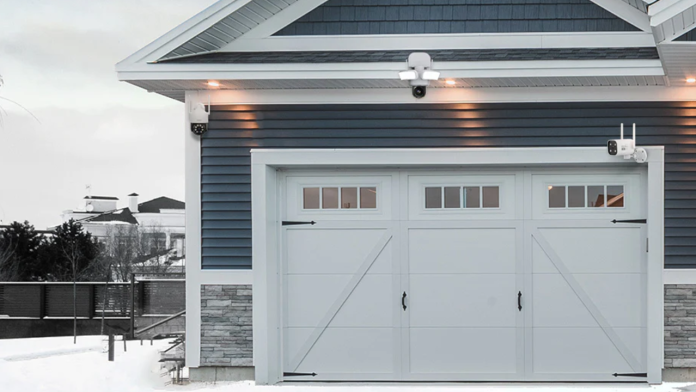Sun-powered security cameras use photovoltaic boards to convert light into electric energy, driving the camera and its components. These cameras are equipped with rechargeable batteries to keep excess power for operation in the course of low-light situations or at night time. They may be designed to be weatherproof, making them suitable for outdoor environments, which aligns with your hobby in durable and reliable devices for numerous weather conditions.
Solar-powered safety cameras are best for remote places and off-grid sites, presenting non-stop surveillance without the fee and logistics of laying electric cables. These solar powered cameras are more famous for each residential and commercial program, supplying a blend of environmental sustainability and operational performance, reflecting your interest in solutions that combine practicality with environmental consciousness.
What Are The Cost Considerations When Installing Solar-Powered Cameras?
When considering the price of installing solar-powered protection cameras, numerous factors come into play. Initially, there is the premature cost of the digital camera system itself, which could vary based on the emblem, capabilities, and excellence. Moreover, you will want to account for the cost of solar panels, batteries, and any necessary mounting hardware. Set-up fees may additionally vary depending on whether expert installation is required and the complexity of the setup.
Ongoing prices encompass the preservation of solar panels and batteries, in addition to the ability to provide statistics if cloud-based garage offerings are used. It is also vital to invest in any additional device needed, along with internet routers or signal boosters, especially for remote places. Ultimately, consider long-term financial savings from reduced strength payments, as sun-powered cameras generally function independently from the grid once installed.
Components of Solar-Powered Security Cameras
See the details below:
Solar Panel
The solar panel is the central component of sun-powered security camera structures, responsible for converting sunlight into electrical electricity. Composed of photovoltaic cells, it generates direct contemporary (DC) power whilst exposed to sunlight. This strength is critical for charging the digital camera’s rechargeable batteries, permitting continuous operation even in places without access to conventional electricity resources. Weatherproof and durable, solar panels are designed to resist outdoor situations, ensuring dependable overall performance and sustainable energy performance.
Rechargeable Battery Storage
Rechargeable battery storage is essential in solar-powered safety camera systems, providing a reservoir for storing power captured through the solar panel. Typically using lithium-ion (Li-ion) batteries, those systems ensure continuous operation by storing extra solar power for use throughout periods of low daylight or at night. A battery management system (BMS) optimizes charging and discharging to extend battery lifestyles, making them reliable for faraway surveillance programs in numerous environmental conditions.
Camera Unit
The camera unit in sun-powered protection structures encompasses imaging technology, processing electronics, and connectivity capabilities. It includes a photo sensor for capturing video, a lens for focusing light onto the sensor, and video processing capabilities. Connectivity options, along with wireless or cellular, enable remote access and management. This unit is crucial for shooting and transmitting splendid video footage, making sun-powered cameras powerful tools for surveillance in outside and remote locations.
Charge Controller
A charge controller regulates the flow of electrical power from the solar panel to the batteries in solar-powered security digicam systems. It optimizes charging performance by coping with voltage and present-day degrees, ensuring batteries get hold of the precise price without overcharging or undercharging. This issue also contains protection features like temperature compensation to regulate charging parameters based on environmental situations. By retaining battery health and maximizing electricity utilization, the fee controller enhances the overall reliability and durability of the camera machine.
Mounting Hardware
Mounting hardware for sun-powered protection cameras consists of brackets, poles, and kits designed for the cozy installation of sun panels and digital camera units. These additives ensure optimal positioning to maximize sunlight publicity for efficient solar power sequestration. In addition, they aid in bendy adjustment of digicam angles and heights to obtain desired surveillance coverage. Climate-resistant materials and designs protect against environmental elements, ensuring durability and longevity in out-of-door settings. Proper mounting hardware is important for the stable and effective deployment of solar-powered digicam systems.
Enclosures and Housing
Enclosure and housing for sun-powered security cameras guard delicate parts from natural factors like dampness, soil, and temperature variances. Commonly produced using dependable materials like polycarbonate or aluminum, these weatherproof fenced-in areas guarantee durability and unwavering quality in open-air settings. They frequently function as seals and gaskets to prevent water ingress and corrosion, safeguarding digital circuits and batteries. Well-designed enclosures maintain operational integrity, allowing cameras to function effectively and securely in various weather situations.
Conclusion
Sun-powered security cameras combine sophisticated technology with sustainable power solutions. By harnessing solar energy through photovoltaic panels, storing energy in rechargeable batteries, and leveraging superior camera and connectivity features, those structures offer effective security solutions in remote or environmentally hard places. Knowledge of the components and functionalities of solar-powered protection cameras is essential for deciding on and deploying systems that meet unique surveillance desires while promoting energy efficiency and environmental responsibility.












